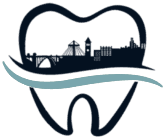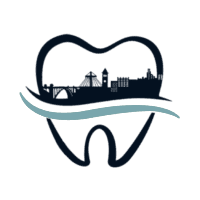Some discomfort is a common experience for those who have just received orthodontic treatment. Gums that are tender and sore are the most frequently encountered concern for those with new braces. Thankfully, this period of discomfort passes quickly, going away in around two weeks. There are numerous methods for relieving orthodontic pain available from both your orthodontist and your primary dental provider. This guide will provide insight on some of the most common ways that practitioners will help you find relief from orthodontic pain.
How To Find Relief From Orthodontic Pain
Jaw pain and gum pain are frequently encountered by those who have recently had fixed appliances put in to address orthodontic concerns. The degree of pain experienced varies by appliance, oral health, jaw health, and other factors. However, pain tolerances also vary from patient to patient. Thankfully dentists and orthodontists alike are prepared to provide methods of finding relief from this pain. There are a variety of treatments and techniques available that include at-home treatments and medication. Pain-relieving methods will be prescribed on a case-by-case basis, with the patient’s pain tolerance being a determining factor.
- Non-Steroidal Anti-Inflammatory Drugs: These medications, also known as NSAIDs, help relieve the discomfort by easing inflammation. They’re among the safest options when the discomfort is caused by excessive tooth movement. Ibuprofen is a commonly prescribed form of NSAID, as is Naproxen Sodium.
- Analgesics: Analgesics are a medication that numbs the body’s sensitivity to pain. The use of analgesics is determined by the patient’s tolerance for medication such as acetaminophen. NSAIDs will generally be prescribed before analgesics are suggested.
- Targeted Nutritional Guidance: One surprising element of orthodontic pain is tied to our diet. The development of this discomfort can be influenced by our diets. Certain patients may benefit from nutritional guidance covering methods that avoid triggering pain during the adjustment period.
Your primary dentist will generally be able to provide relief from general, orthodontic pain. If complications related to the appliance are discovered, however, you should see an orthodontist right away. Your dentist will generally be able to handle concerns with enamel chipping, abscesses, and gum irritation, though they may opt to involve your orthodontist in these cases as well. Some treatments that may be suggested can include gels that numb your gums or cheek tissue and waxes to cover wires from your appliance. The good news is that, in general, discomfort from your orthodontic appliance will pass with a little patience.
Seeking Dental Care For Orthodontic Pain
If you’ve ever experienced dental pain, you’ll know that it can impact multiple areas of your life. It can result in it difficult to sleep, eat, and even talk properly. When orthodontic pain is present, your best bet is to speak to your dental provider for guidance to see you through. While orthodontic pain can pass without incident, it’s best to call your provider at least if you experience it. There’s always the possibility that the pain you’re experiencing can be pointing to a more severe underlying cause. So use the phone to speak to your provider about any questions you may have.



